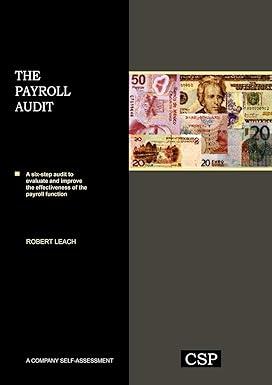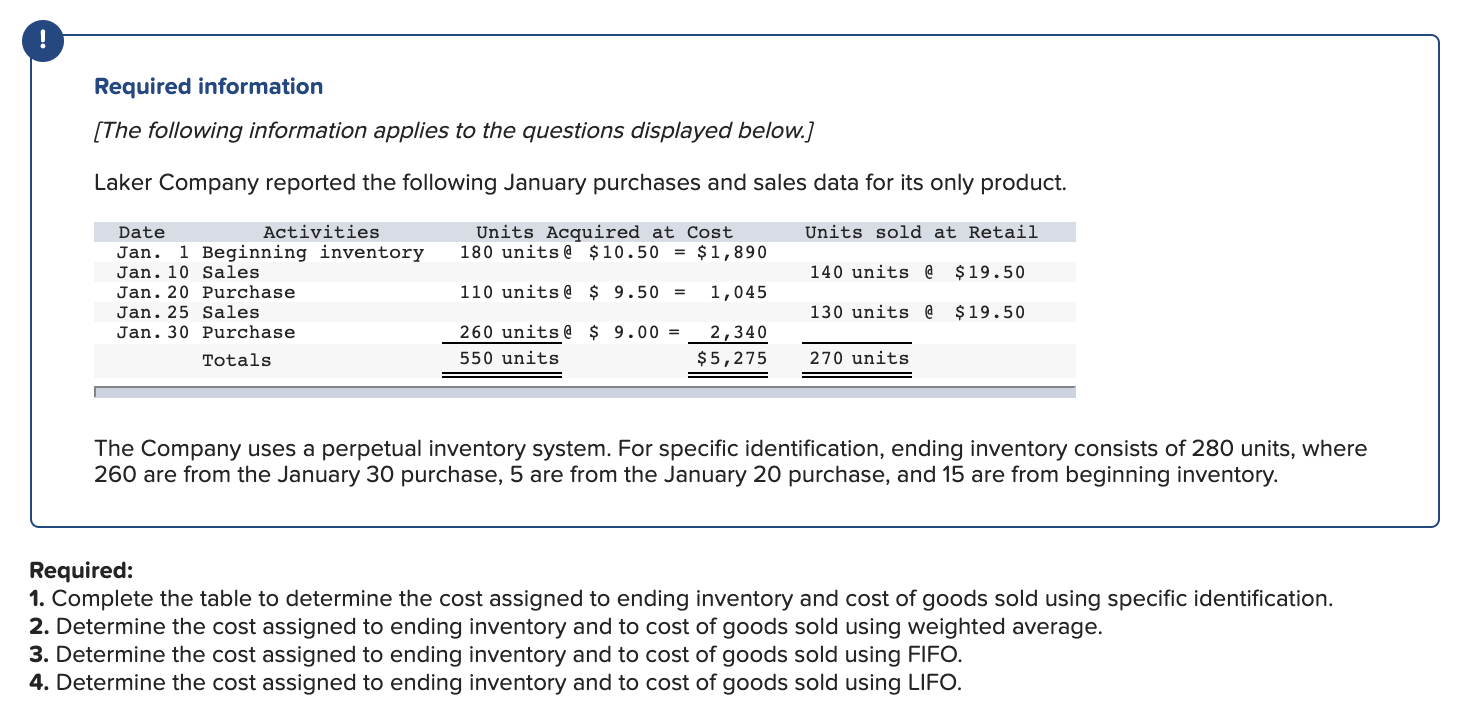
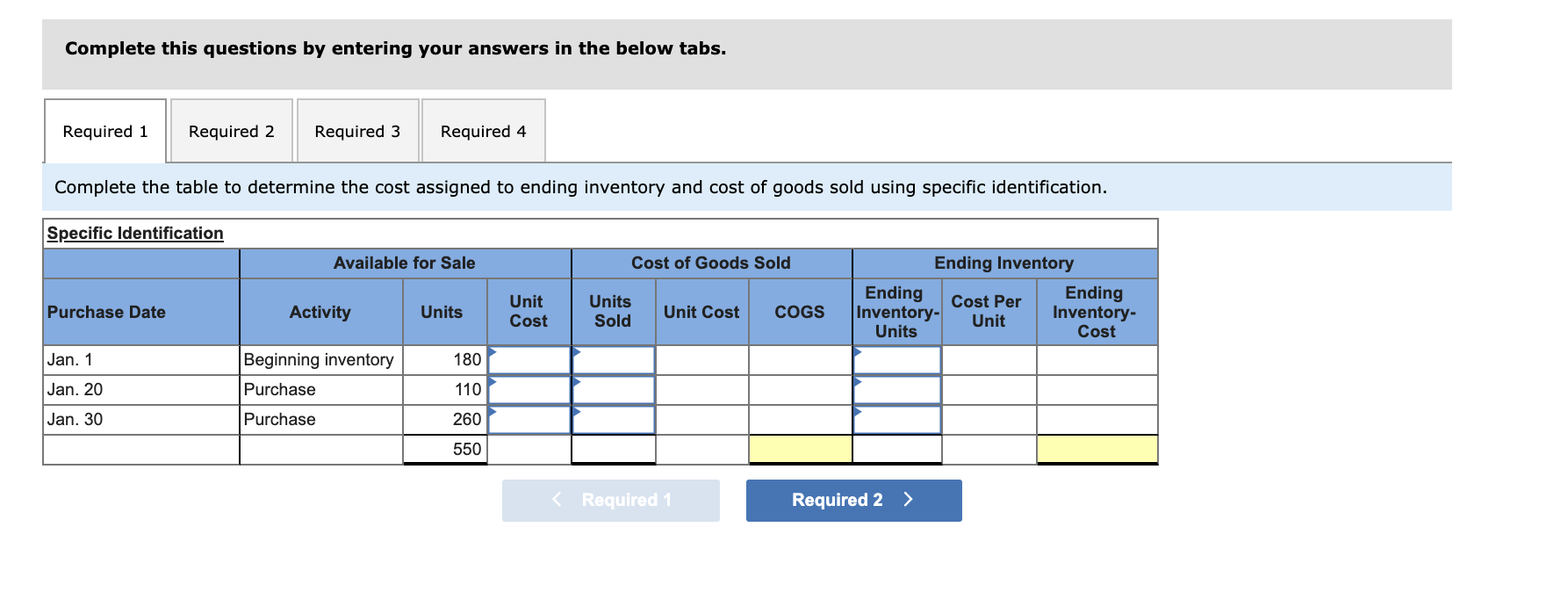

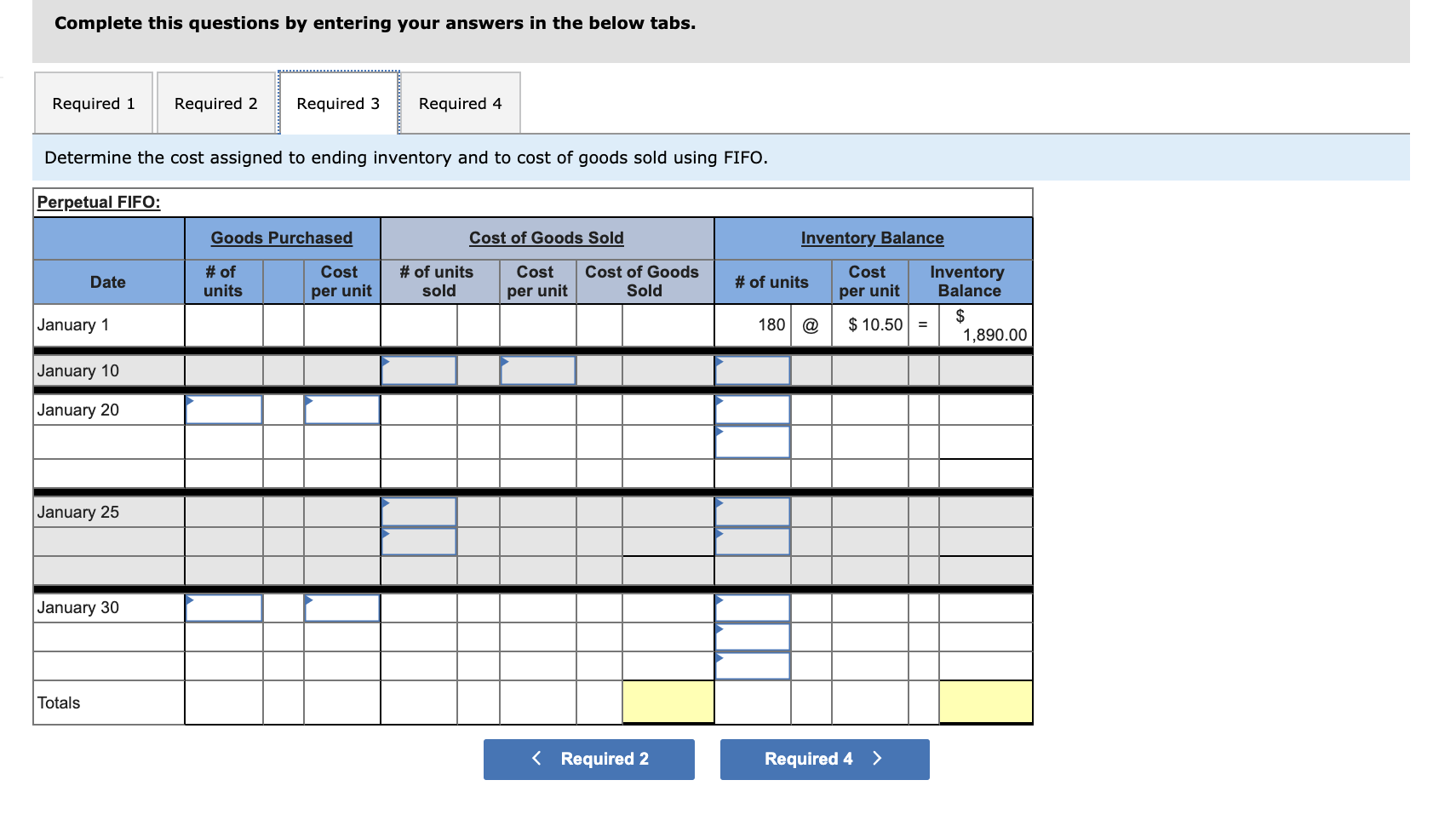
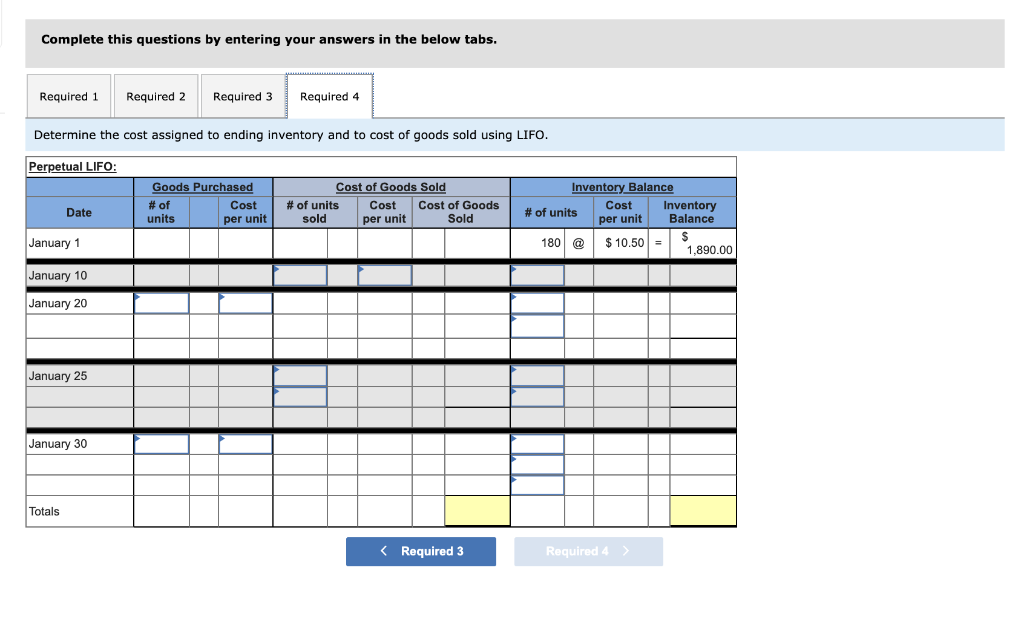
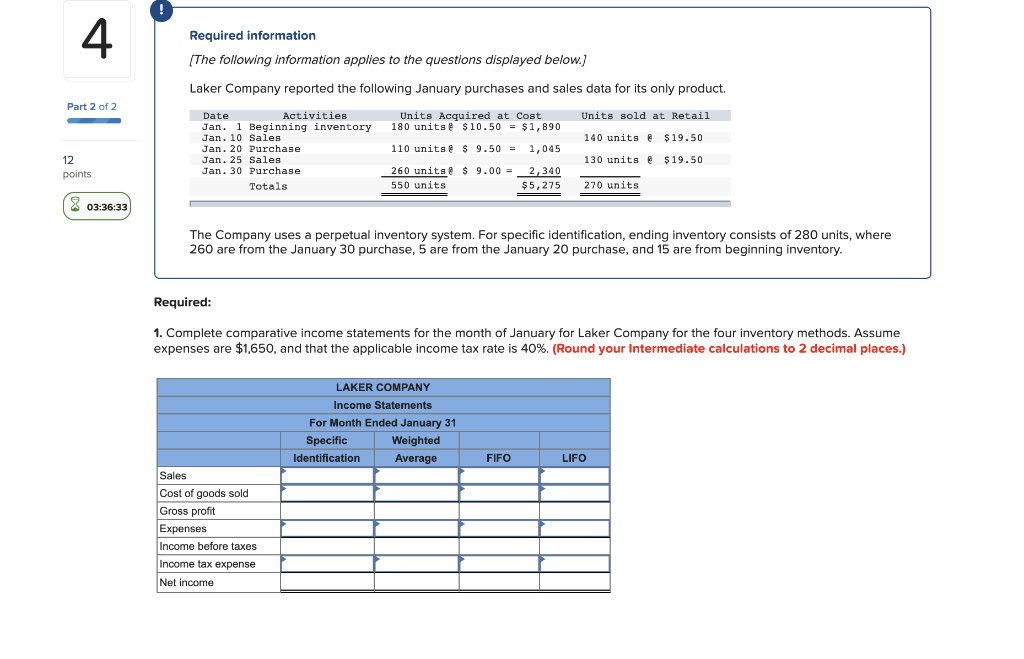
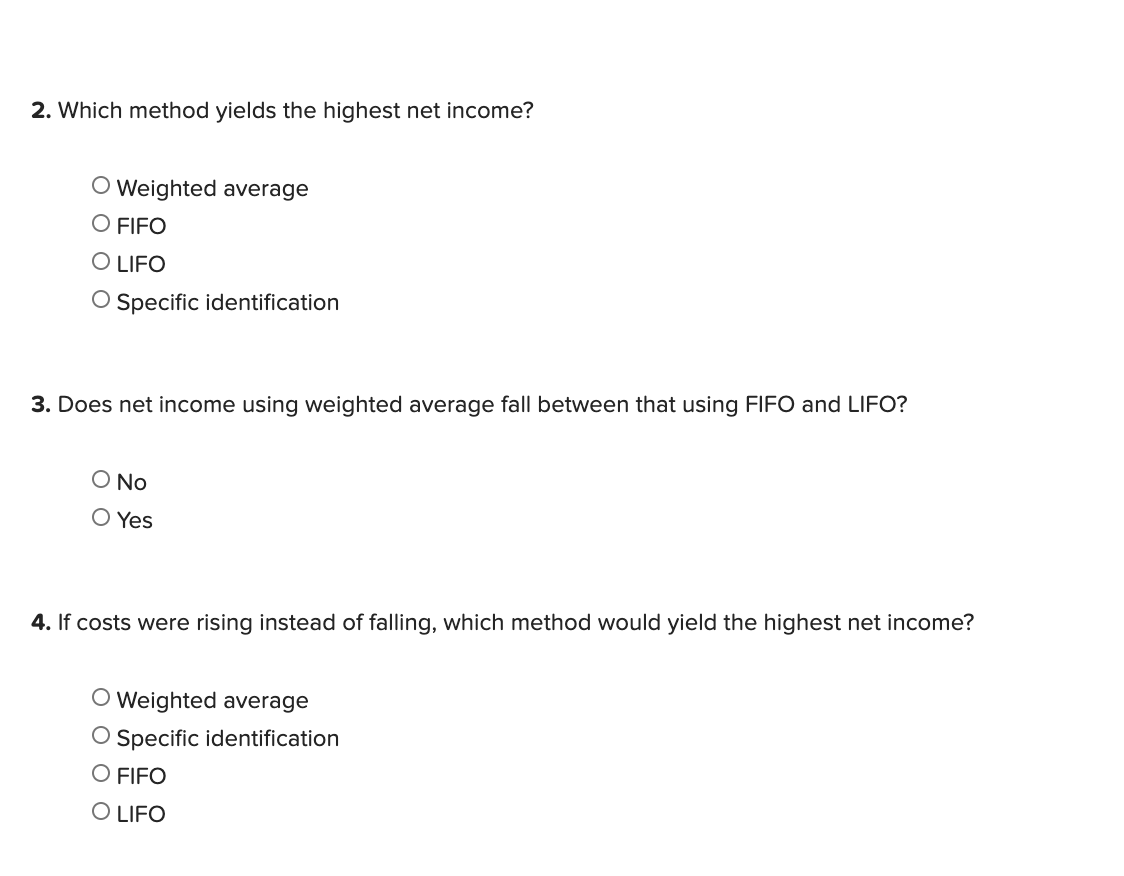
Required information (The following information applies to the questions displayed below.] Laker Company reported the following January purchases and sales data for its only product. Units sold at Retail Units Acquired at Cost 180 units @ $10.50 = $1,890 140 units @ $19.50 Date Activities Jan. 1 Beginning inventory Jan. 10 Sales Jan. 20 Purchase Jan. 25 Sales Jan. 30 Purchase Totals 110 units @ $ 9.50 1,045 130 units @ $19.50 260 units@ $ 9.00 = 550 units 2,340 $5,275 270 units The Company uses a perpetual inventory system. For specific identification, ending inventory consists of 280 units, where 260 are from the January 30 purchase, 5 are from the January 20 purchase, and 15 are from beginning inventory. Required: 1. Complete the table to determine the cost assigned to ending inventory and cost of goods sold using specific identification. 2. Determine the cost assigned to ending inventory and to cost of goods sold using weighted average. 3. Determine the cost assigned to ending inventory and to cost of goods sold using FIFO. 4. Determine the cost assigned to ending inventory and to cost of goods sold using LIFO. Complete this questions by entering your answers in the below tabs. Required 1 Required 2 Required 3 Required 4 Complete the table to determine the cost assigned to ending inventory and cost of goods sold using specific identification. Specific Identification Available for Sale Cost of Goods Sold Units Ending Inventory Ending Ending Cost Per Inventory- Inventory- Unit Units Cost Purchase Date Activity Unit Cost Units Unit Cost COGS Sold Jan. 1 Beginning inventory 180 Jan. 20 Purchase 110 Jan. 30 Purchase 260 550 Complete this questions by entering your answers in the below tabs. Required 1 Required 2 Required 3 Required 4 Determine the cost assigned to ending inventory and to cost of goods sold using weighted average. (Round cost per unit to 2 decimal places.) Weighted Average - Perpetual: Goods Purchased Cost of Goods Sold Inventory Balance Cost per Cost per Cost per Date # of units # of units sold Cost of Goods Sold # of units Inventory Balance unit unit unit January 1 180 @ $ 10.50 = $1,890.00 January 10 January 20 Average cost January 25 January 30 Totals Complete this questions by entering your answers in the below tabs. Required 1 Required 2 Required 3 Required 4 Determine the cost assigned to ending inventory and to cost of goods sold using FIFO. Perpetual FIFO: Goods Purchased Cost of Goods Sold Inventory Balance Cost Date # of units # of units sold Cost per unit Cost of Goods Sold # of units per unit per unit Cost Inventory Balance $ $ 10.50 = 1,890.00 January 1 180 @ January 10 January 20 January 25 January 30 Totals Complete this questions by entering your answers in the below tabs. Required 1 Required 2 Required 3 Required 4 Determine the cost assigned to ending inventory and to cost of goods sold using LIFO. Perpetual LIFO: Goods Purchased # of Cost units per unit Cost of Goods Sold # of units Cost Cost of Goods sold per unit Sold Date Inventory Balance # of units Cost Inventory per unit Balance 180 @ $10.50 = $ 1,890.00 January 1 January 10 January 20 January 25 January 30 Totals 4 Required information (The following information applies to the questions displayed below.) Laker Company reported the following January purchases and sales data for its only product. Part 2 of 2 Units sold at Retail 140 units @ $19.50 120 Date Activities Jan. 1 Beginning inventory Jan. 10 Sales Jan. 20 Purchase Jan. 25 Sales Jan. 30 Purchase Totals Units Acquired at Cost 180 units@ $10.50 = $1,890 110 units@ $ 9.50 = 1,045 260 units@ $ 9.00 = 2,340 550 units $5,275 130 units @ $19.50 12 points 270 units 03:36:33 The Company uses a perpetual inventory system. For specific identification, ending inventory consists of 280 units, where 260 are from the January 30 purchase, 5 are from the January 20 purchase, and 15 are from beginning inventory. Required: 1. Complete comparative income statements for the month of January for Laker Company for the four inventory methods. Assume expenses are $1,650, and that the applicable income tax rate is 40%. (Round your Intermediate calculations to 2 decimal places.) LAKER COMPANY Income Statements For Month Ended January 31 Specific Weighted Identification Average FIFO LIFO Sales Cost of goods sold Gross profit Expenses Income before taxes Income tax expense Net income 2. Which method yields the highest net income? O Weighted average O FIFO O LIFO O Specific identification 3. Does net income using weighted average fall between that using FIFO and LIFO? O No O Yes 4. If costs were rising instead of falling, which method would yield the highest net income? Weighted average O Specific identification O FIFO OLIFO













